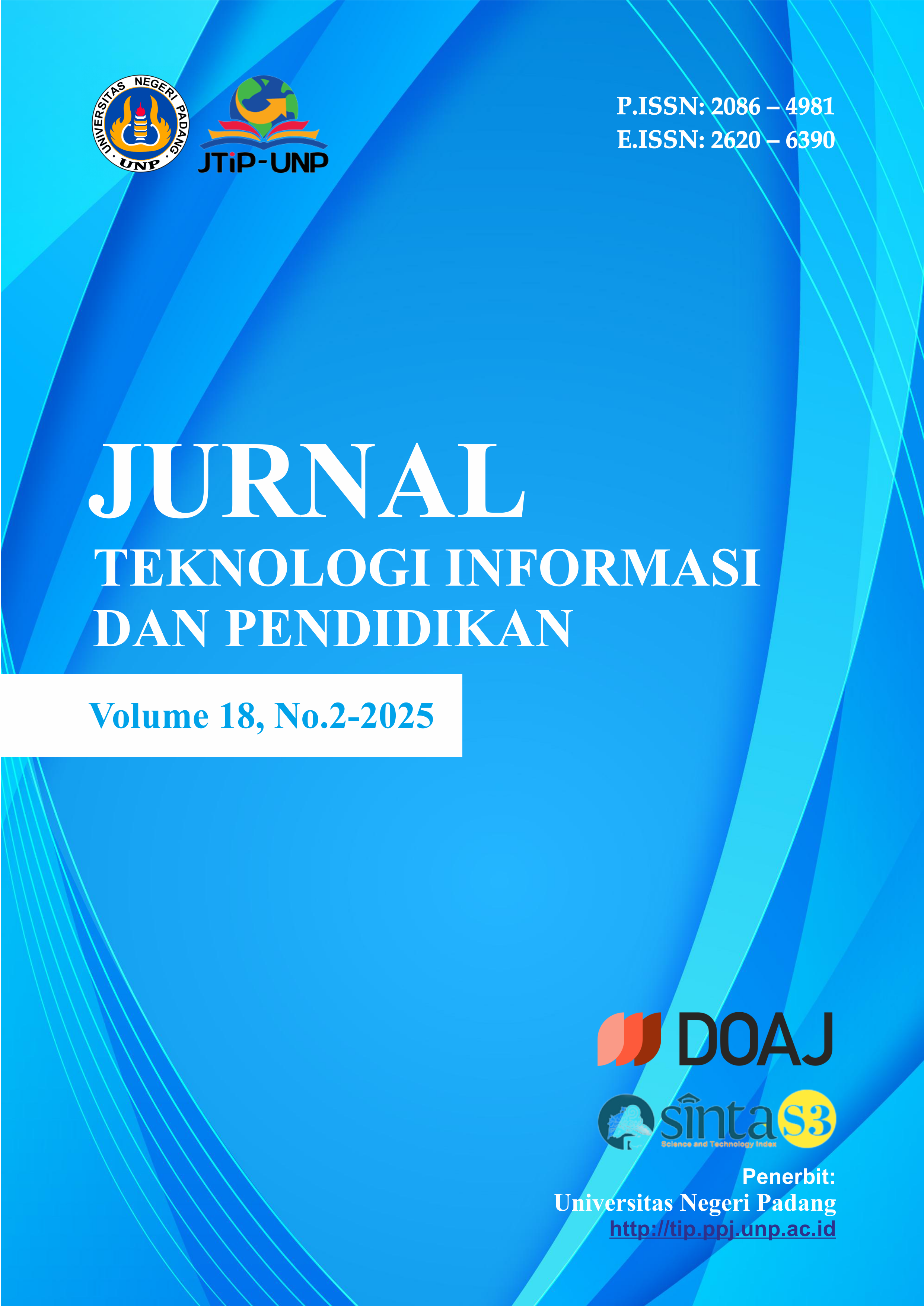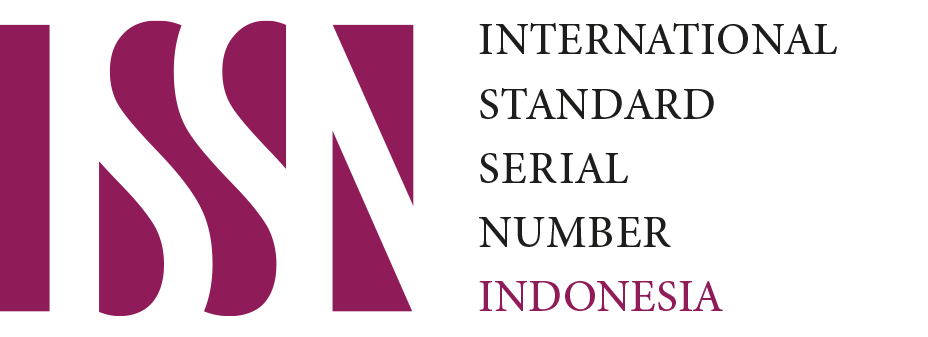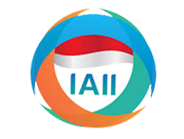Internet of Things, Blockchain, and Artificial Intelligence for Green Governance – A Proposed Model
DOI:
https://doi.org/10.24036/jtip.v18i2.1066Keywords:
Green Governance, Internet of Things, Blockchain, Artificial Intelligence, BibliometrixAbstract
Global climate change remains a significant challenge that occurs in numerous regions worldwide. Countries are persistently undertaking various steps, including the development of green governance model to address this issue. Nonetheless, the implementation of these eco-friendly goods encounters numerous challenges, one of which is to the precision of data regarding green products. Conversely, substantial study has been conducted on three burgeoning technologies—blockchain, the Internet of Things (IoT), and artificial intelligence (AI)—which are progressively employed to enhance the green governance model. This qualitative study aims to conduct an in-depth exploration using 809 documents from the Scopus database, with articles from the past 10 years, and employs Biblioshiny techniques for data analysis to form a model that leverages these three technologies as a framework for governing and implementing green insurance products. These three technologies provide distinct qualities that can synergistically enhance the development of green data products. This research significantly aids the implementation of the green governance model across various industries and sectors, while also supporting governmental monitoring
References
A. Eco, “The Future of Insurance: Green Insurance Products Explained.” Accessed: Aug. 12, 2025. [Online]. Available: https://ecolifepath.com/green-insurance-products/
T. J. Post, “Green insurance a promising new climate opportunity,” The Jakarta Post. Accessed: Aug. 11, 2025. [Online]. Available: https://www.thejakartapost.com/paper/2023/07/07/green-insurance-a-promising-new-climate-opportunity.html
T. Cicirko and M. Cicirko, “Insurance sector challenges in the light of ESG. The case of Poland,” JMFS, no. 51, pp. 59–79, Sep. 2024, doi: 10.33119/JMFS.2024.51.3.
L. Meinck and benthrust, “Our Pulse: The 5 Key Challenges for Insurers in the Green Revolution.” Accessed: Aug. 12, 2025. [Online]. Available: https://www.benthurst.com/our-cases/our-pulse-the-5-key-challenges-for-insurers-in-the-green-revolution
M. H. Alsharif, A. Jahid, A. H. Kelechi, and R. Kannadasan, “Green IoT: A Review and Future Research Directions,” Symmetry, vol. 15, no. 3, p. 757, Mar. 2023, doi: 10.3390/sym15030757.
P. Fraga-Lamas, S. I. Lopes, and T. M. Fernández-Caramés, “Green IoT and Edge AI as Key Technological Enablers for a Sustainable Digital Transition towards a Smart Circular Economy: An Industry 5.0 Use Case,” Sensors, vol. 21, no. 17, p. 5745, Aug. 2021, doi: 10.3390/s21175745.
M. Oudani, A. Sebbar, K. Zkik, I. El Harraki, and A. Belhadi, “Green Blockchain based IoT for secured supply chain of hazardous materials,” Computers & Industrial Engineering, vol. 175, p. 108814, Jan. 2023, doi: 10.1016/j.cie.2022.108814.
S. A. R. Khan, D. I. Godil, C. J. C. Jabbour, S. Shujaat, A. Razzaq, and Z. Yu, “Green data analytics, blockchain technology for sustainable development, and sustainable supply chain practices: evidence from small and medium enterprises,” Ann Oper Res, vol. 350, no. 2, pp. 603–627, Jul. 2025, doi: 10.1007/s10479-021-04275-x.
C. P. Osorio, F. Leucci, and D. Porrini, “Analyzing the Relationship between Agricultural AI Adoption and Government-Subsidized Insurance,” Agriculture, vol. 14, no. 10, p. 1804, Oct. 2024, doi: 10.3390/agriculture14101804.
N. Donthu, S. Kumar, D. Mukherjee, N. Pandey, and W. M. Lim, “How to conduct a bibliometric analysis: An overview and guidelines,” Journal of Business Research, vol. 133, no. April, pp. 285–296, 2021, doi: 10.1016/j.jbusres.2021.04.070.
H. Nobanee, F. A. Elsaied, N. Alhammadi, and N. Wazir, “Bibliometric analysis and visualization of green, sustainable, and environmental insurance research,” J. Finan. Serv. Mark., vol. 28, no. 4, pp. 631–648, 2023, doi: 10.1057/s41264-022-00185-6.
L. Stricker, C. Pugnetti, J. Wagner, and A. Zeier Röschmann, “Green Insurance: A Roadmap for Executive Management,” JRFM, vol. 15, no. 5, p. 221, May 2022, doi: 10.3390/jrfm15050221.
G. Desalegn, “Insuring a greener future: How green insurance drives investment in sustainable projects in developing countries?,” GF, vol. 5, no. 2, pp. 195–210, 2023, doi: 10.3934/GF.2023008.
R. Verdecchia, J. Sallou, and L. Cruz, “A systematic review of Green,” WIREs Data Min & Knowl, vol. 13, no. 4, p. e1507, Jul. 2023, doi: 10.1002/widm.1507.
H. Liu, Z. Liu, C. Zhang, and T. Li, “Transformational insurance and green credit incentive policies as financial mechanisms for green energy transitions and low-carbon economic development,” Energy Economics, vol. 126, p. 107016, Oct. 2023, doi: 10.1016/j.eneco.2023.107016.
X. Lin, C.-Y. Lee, and C. K. Fan, “Analysis of Innovative Green Marketing Corresponding to Consumer Preferences: A Case Study of the Insurance Industry,” Sustainability, vol. 17, no. 5, p. 2179, Mar. 2025, doi: 10.3390/su17052179.
J. Li, Y. Tian, and C. Zhang, “Intelligent Online Monitoring Technology of Green Power Transmission and Transformation Equipment Based on Internet of Things,” Mobile Information Systems, vol. 2022, pp. 1–11, Jun. 2022, doi: 10.1155/2022/3679898.
R. Caso et al., “Antennas and photovoltaic panels: Toward a green Internet of Things,” in 2015 IEEE 2nd World Forum on Internet of Things (WF-IoT), Milan, Italy: IEEE, Dec. 2015, pp. 128–131. doi: 10.1109/WF-IoT.2015.7389039.
X. Fernando and G. Lăzăroiu, “Energy-Efficient Industrial Internet of Things in Green 6G Networks,” Applied Sciences, vol. 14, no. 18, p. 8558, Sep. 2024, doi: 10.3390/app14188558.
Y. Zhou, “A blockchain-enabled collaborative management framework for optimizing green power market transactions,” Energy Inform, vol. 8, no. 1, p. 89, Jul. 2025, doi: 10.1186/s42162-025-00549-x.
M. Al Amin, R. Baldacci, and L. Kerbache, “Blockchain-based green supply chain management framework for sustainable practices in Bangladeshi RMG industries,” Discov Sustain, vol. 6, no. 1, p. 508, Jun. 2025, doi: 10.1007/s43621-025-01196-8.
S. Cheng, D. Li, and T. Liu, “Pricing and green investment of technology-differentiated manufacturers under blockchain technology,” Computers & Industrial Engineering, vol. 208, p. 111418, Oct. 2025, doi: 10.1016/j.cie.2025.111418.
W. Mbanyele and L. T. Muchenje, “Towards a greener future: The role of blockchain legislation in promoting corporate green innovation,” International Review of Economics & Finance, vol. 103, p. 104400, Oct. 2025, doi: 10.1016/j.iref.2025.104400.
J. Wu, “Sustainable development of green reverse logistics based on blockchain,” Energy Reports, vol. 8, pp. 11547–11553, Nov. 2022, doi: 10.1016/j.egyr.2022.08.219.
A. Poberezhna, “Addressing Water Sustainability With Blockchain Technology and Green Finance,” in Transforming Climate Finance and Green Investment with Blockchains, Elsevier, 2018, pp. 189–196. doi: 10.1016/B978-0-12-814447-3.00014-8.
Downloads
Published
How to Cite
Issue
Section
License
Copyright (c) 2025 Jurnal Teknologi Informasi dan Pendidikan

This work is licensed under a Creative Commons Attribution-ShareAlike 4.0 International License.















.png)














